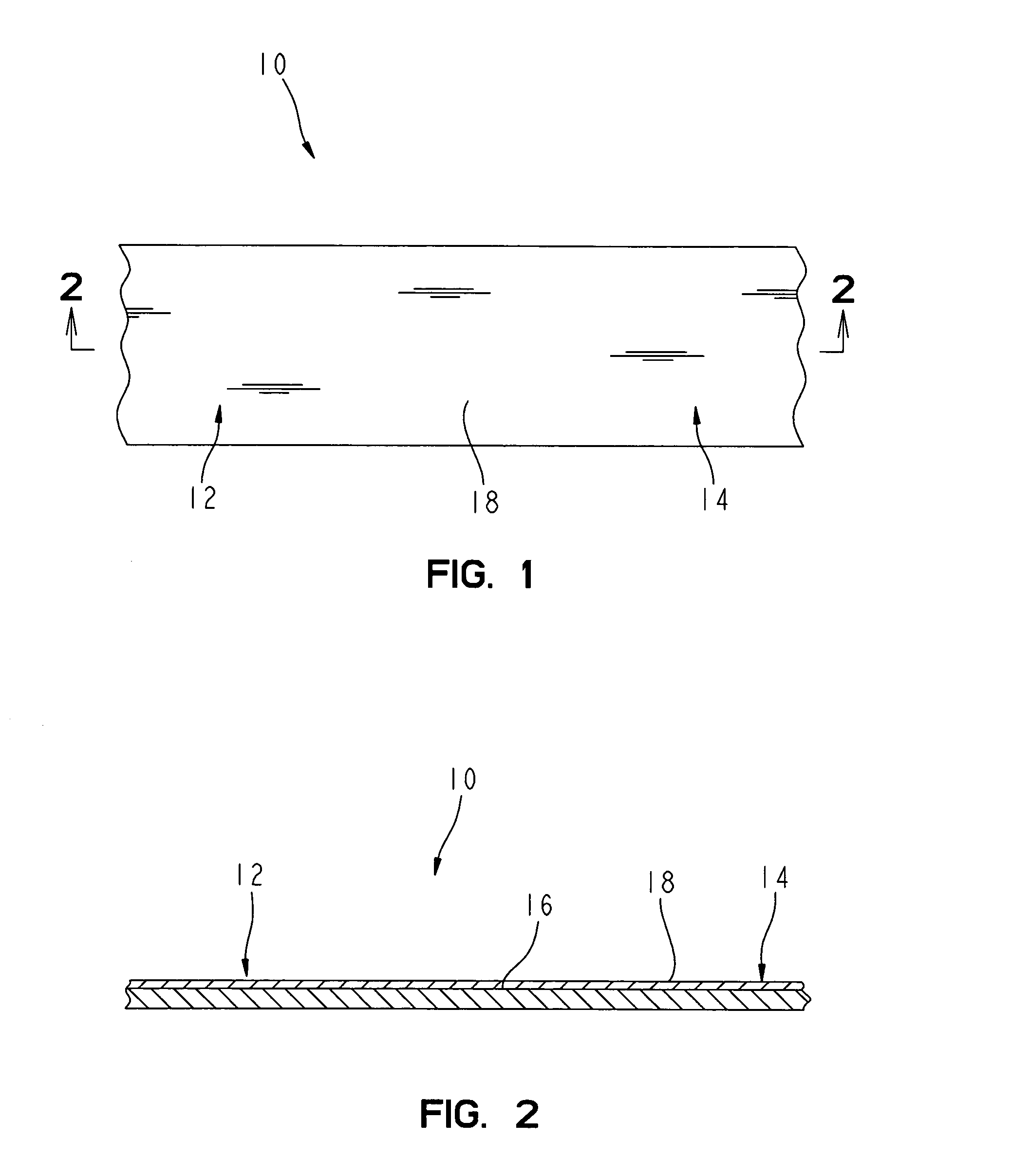Modification of surfaces in order to increase the surface tension
a technology of surface tension and modification, applied in the direction of surface/boundary effect, ion implantation coating, superimposed coating process, etc., can solve the problem that the surface tension cannot be changed or made unusable, and the surface tension cannot be optimally high
- Summary
- Abstract
- Description
- Claims
- Application Information
AI Technical Summary
Benefits of technology
Problems solved by technology
Method used
Image
Examples
example 1
Comparison of the Filling Times of a Test Capillary
[0048]A cylindrical test capillary was constructed from two parallel opposing foils which are kept at a defined distance from one another by an exactly defined spacer in the form of a double-sided adhesive tape which determines the length, width and height dimensions of the capillary. The opposing surfaces of the two foils were provided with the coating to be tested. The foils that were used were polyester foils (Melinex®, ICI) which were variously modified as follows.[0049]1.) Foil which was coated with photoreactively equipped hydrophilic polymers (BSI)[0050]2.) Foil which was subjected to a corona plasma treatment (Antec)[0051]3.) Foil on which a layer containing a wetting agent was applied (A.R.)[0052]4.) Foil on which inorganic-organic nanocomposites were coated by means of sol-gel technology (INM)[0053]5.) Foil on which aluminium oxide was vapour deposited but which was not subsequently treated with boiling water or water vapo...
PUM
| Property | Measurement | Unit |
|---|---|---|
| Thickness | aaaaa | aaaaa |
| Thickness | aaaaa | aaaaa |
| Thickness | aaaaa | aaaaa |
Abstract
Description
Claims
Application Information
 Login to View More
Login to View More - R&D
- Intellectual Property
- Life Sciences
- Materials
- Tech Scout
- Unparalleled Data Quality
- Higher Quality Content
- 60% Fewer Hallucinations
Browse by: Latest US Patents, China's latest patents, Technical Efficacy Thesaurus, Application Domain, Technology Topic, Popular Technical Reports.
© 2025 PatSnap. All rights reserved.Legal|Privacy policy|Modern Slavery Act Transparency Statement|Sitemap|About US| Contact US: help@patsnap.com

